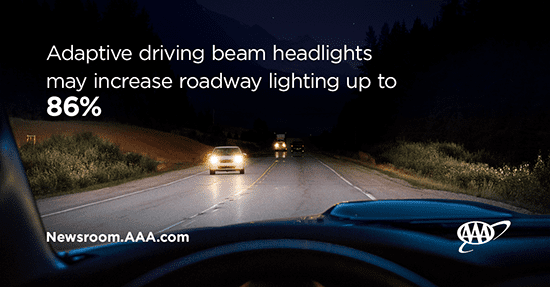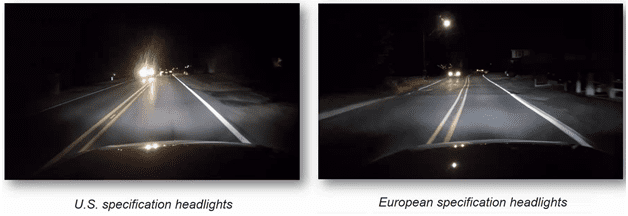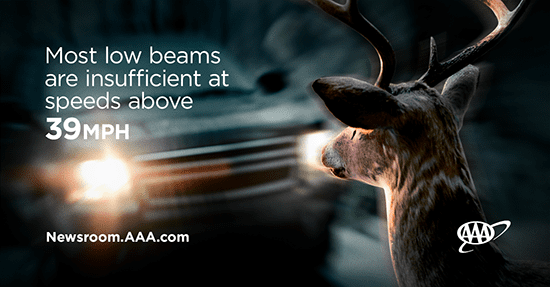BOISE – (April 16, 2019) – Only 25 percent of driving in the U.S. is done at night, yet half of all driver fatalities and 75 percent of pedestrian deaths occur after dark. The Adaptive Driving Beam (ADB) headlight technology that is currently available in Europe and Canada could be part of the solution, according to new research by AAA.
Two automobile manufacturers provided AAA with two cars each – one designed to American headlight specifications, and the other equipped with ADB. After extensive testing in lab and real-world settings, AAA found that the advanced European system could improve roadway lighting by as much as 86 percent.

That’s important, AAA says, because in 2016, there were nearly two million nighttime crashes nationwide that resulted in 760,000 injuries and more than 18,000 deaths. 118 people were fatally injured on Idaho roads that year. Improved visibility could help to prevent future tragedy.
In 2016, Idaho was tied with Wyoming for the third highest percentage of fatalities at dawn and dusk (7 percent of the overall total). Only North Dakota and Delaware had a higher percentage.
With ADB technology, vehicle high and low beams operate simultaneously, but onboard lasers and cameras can detect the presence of nearby vehicles and deactivate only the affected portion of the high beams to prevent glare and maximize light output. Current U.S. motor vehicle safety standards don’t allow low beams and high beams to be used together, limiting their overall effectiveness.

The National Highway Traffic Safety Administration is currently considering changes to the Federal Motor Vehicle Safety Standards that would allow ADB technology to be used in the U.S. AAA encourages additional research that could lead to eventual adoption.
“The technology is still in its infancy, and it’s fairly expensive, but it’s exciting to think that this could have a major impact on the number of nighttime driving accidents and animal strikes that we see in Idaho each year,” says AAA Idaho public affairs director Matthew Conde.
Surprisingly, AAA found that U.S. headlights actually produce slightly more light than their European counterparts. The difference lies in the adaptive technology’s ability to manage the distribution of light, giving drivers the best of both worlds – better visibility through continuous use of the high beams, and reduced glare that would obstruct the field of vision of other drivers.
In recent years, AAA’s headlight research has generated a number of other key findings:
- Two-thirds of U.S. adults who drive at night do not regularly use their high beams.
- In a comparison of low beam headlight types, none were effective above 52 mph when used on roadways without additional overhead lighting. In other words, vehicles have the ability to ‘outrun’ the lighting and visibility that their headlights produce.
- Deteriorated headlamps produce just 22 percent of the light output that new headlights provide. Only 1 in 5 Americans have performed any kind of lens restoration on their vehicle.

In the future, NHTSA may approve the rule changes that would allow ADB technology in American automobiles, but with more than 270 million cars currently operating on U.S. roadways, it could be decades before it’s widely in use. Until then, AAA recommends that drivers use high beams whenever it would not interfere with the safety of other drivers, because high beams produce 28 percent more forward illumination.
Drivers should also adjust their nighttime speeds based on road type – on curves and hills, it may be necessary to build in extra time to detect an obstacle, react, and stop the vehicle.
“Safe driving isn’t just about seeing road markings, reflective signage, and other things that are designed to be easily detected,” Conde said. “It’s about being prepared for the unexpected – a pedestrian in dark clothing, or wildlife that may be crossing the road. Just a little more light could make all the difference.”

